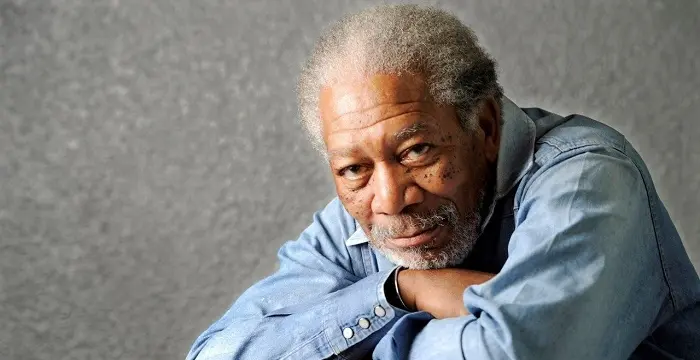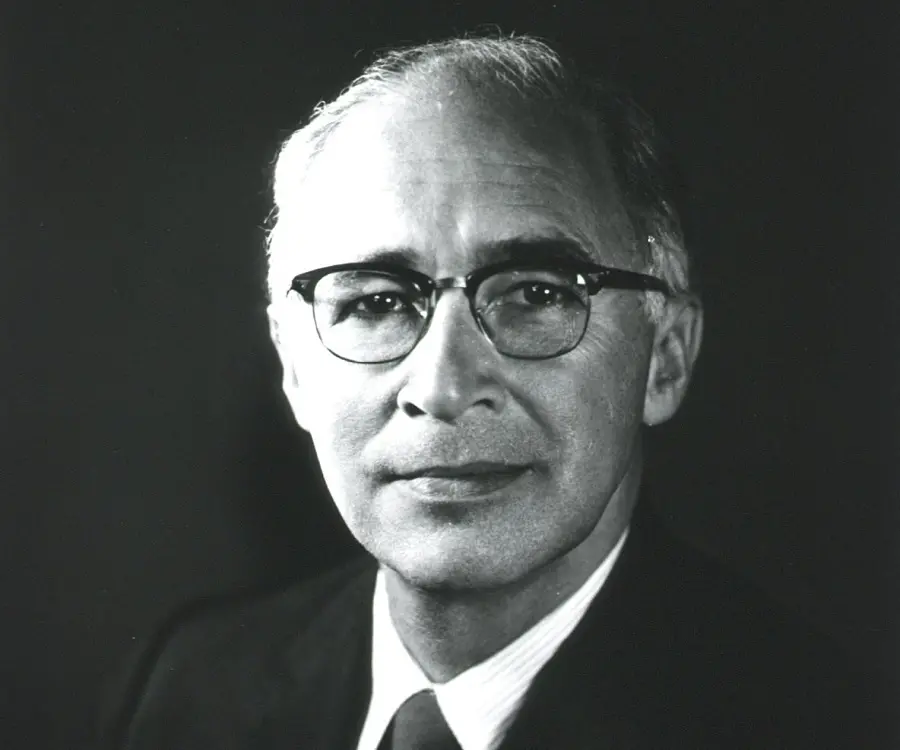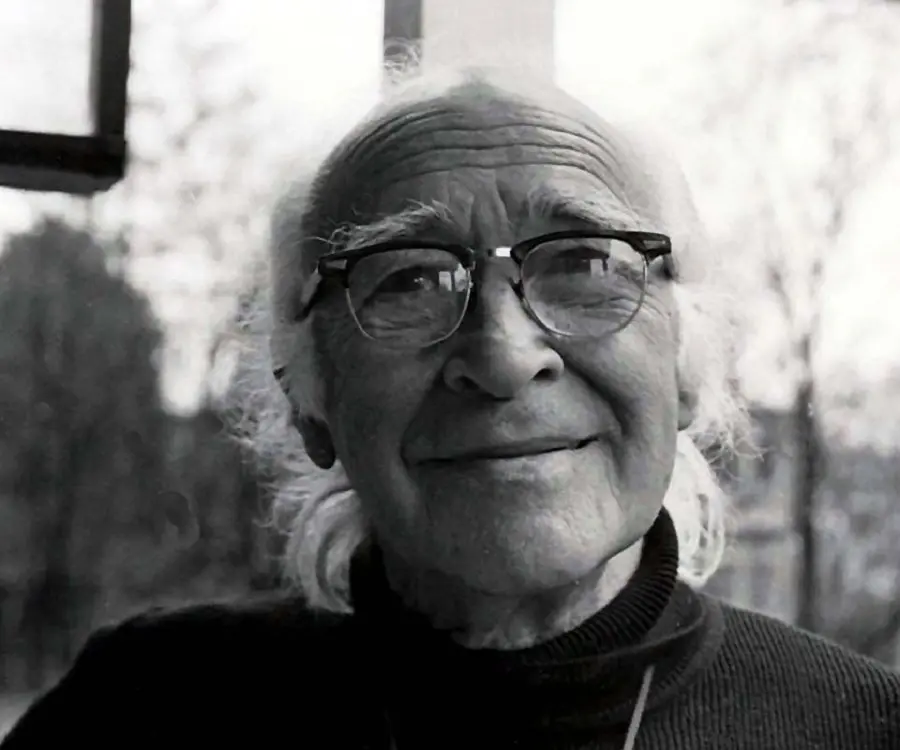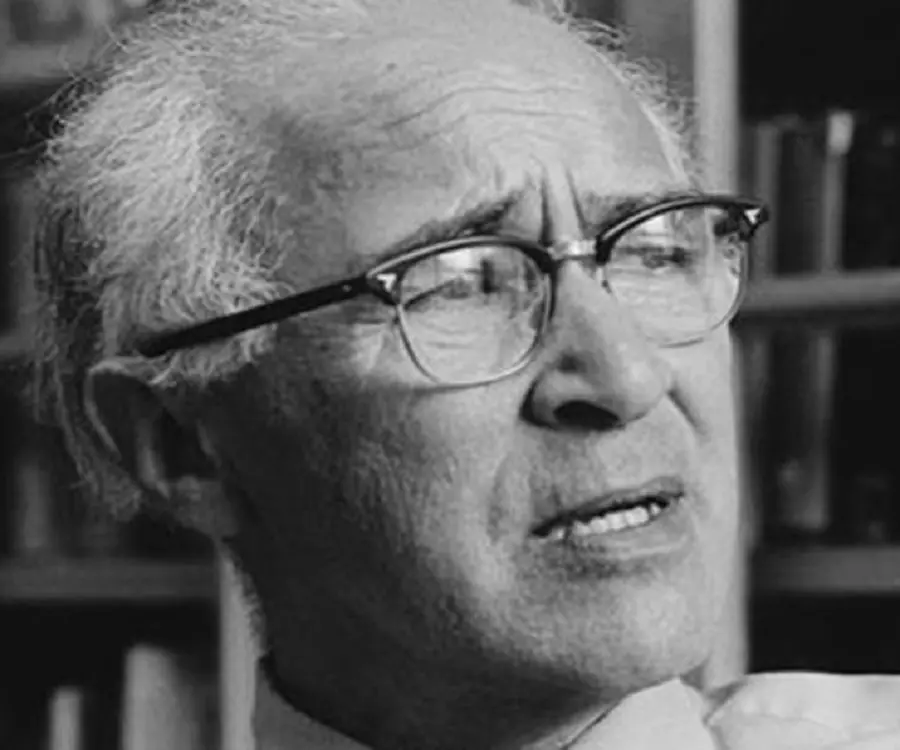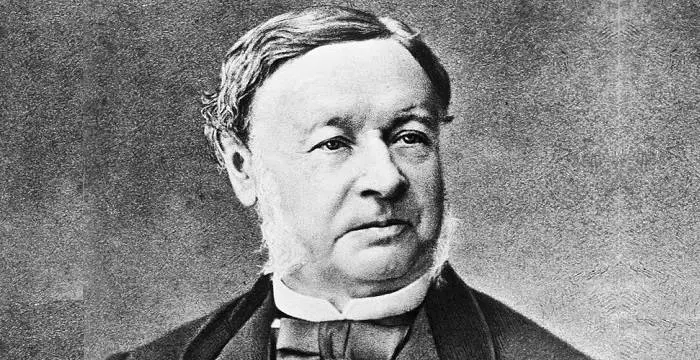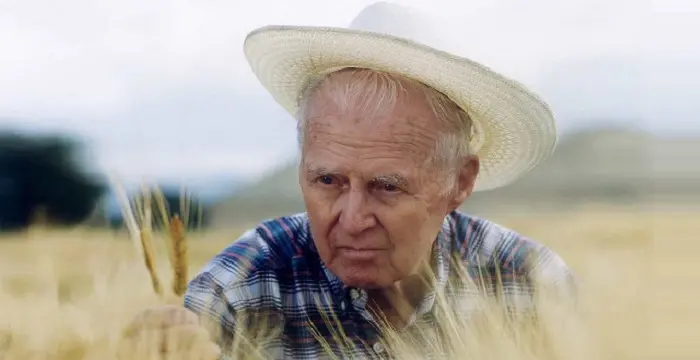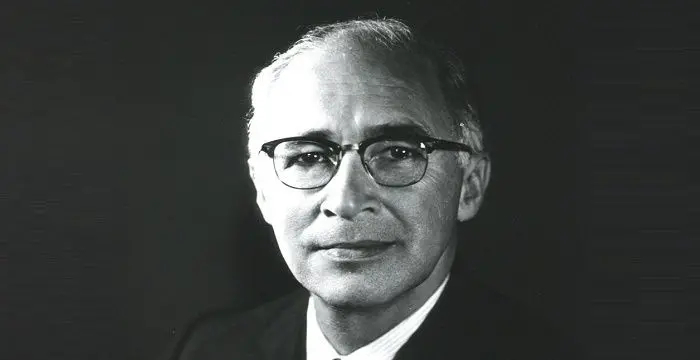
George Wald - Scientists, Timeline and Personal Life
George Wald's Personal Details
George Wald was an American scientist and Nobel Laureate who is known for his work with pigments in the retina
| Information | Detail |
|---|---|
| Birthday | November 18, 1906 |
| Died on | April 12, 1997 |
| Nationality | American |
| Famous | New York University, Scientists, Biologists |
| Hobbies | Nature, Traveling |
| Spouses | Frances Kingsley (1931-?; divorced; 2 children)Ruth Hubbard |
| Childrens | Elijah Wald |
| Universities |
|
| Notable Alumnis |
|
| Birth Place | New York City, New York, United States |
| Gender | Male |
| Sun Sign | Scorpio |
| Born in | New York City, New York, United States |
| Famous as | Scientist |
| Died at Age | 90 |
// Famous New York University
Morgan Freeman
Morgan Freeman is an Academy Award winning actor known for his work in movies like ‘Street Smart’, ‘Driving Miss Daisy’ and ‘Million Dollar Baby’. This biography provides detailed information about his childhood, life, achievements, works & timeline.
Sean Hannity
Sean Hannity is a television host and political commentator best known for the talk show ‘The Sean Hannity Show’. This biography of Sean Hannity provides detailed information about his childhood, life, achievements, works & timeline.
Thomas Girardi
Thomas Girardi is an American attorney who co-founded the law firm, Girardi & Keese. Check out this biography to know about his childhood, family life, achievements and fun facts about him.
George Wald's photo
Who is George Wald?
George Wald was an American scientist who was one of the joint winners of the 1967 Nobel Prize in Physiology or Medicine for his work concerning the physiological and chemical visual processes in the eye; he shared the prize with Haldan Keffer Hartline and Ragnar Granit. Wald dedicated his life researching on how the eye sees and passes visual images to the brain. His work with pigments in the retina earned him rave reviews from fellow researchers and people across the scientific fraternity. Using chemical methods, he extracted pigments from the retina and later measured light absorbance of the pigments. Apart from scientific discoveries and research, Wald enjoyed a steady academic career. He started his career at Harvard as a tutor and later progressed to serve as Faculty Instructor, Associate Professor and finally Professor of Biology. In his lifetime, Wald received numerous awards and honours for his research work from various institutions across the globe. He also held membership in numerous scientific academies.
// Famous Biologists
Juliane Koepcke
Juliane Koepcke is a German-Peruvian biologist, who was the lone survivor among the 92 passengers and crew of the ill-fated LANSA Flight 508 that crashed in the Peruvian rainforest on 24 December 1971. Know more about her life in this biography.
Theodor Schwann
Theodor Schwann was a German physiologist who discovered the Schwann cells in the peripheral nervous system. This biography of Theodor Schwann provides detailed information about his childhood, life, achievements, works & timeline.
Norman Borlaug
Norman Borlaug was an American biologist known as the “Father of the Green Revolution”. This biography of Norman Borlaug provides detailed information about his childhood, life, achievements, works & timeline.
Childhood & Early Life
George Wald was born on November 18, 1906, in New York City, to Ernestine Rosenmann Wald and Isaac Wald. His parents were Jewish immigrants.
Young Wald gained his primary and secondary education from schools in Brooklyn. He later enrolled at the Brooklyn Technical High School in New York from where he graduated in 1922.
Wald gained admission at the Washington Square College at New York University. He graduated with a Bachelor degree in Science in 1927. In 1932, Wald earned the PhD degree in zoology from Columbia University. During his doctorate studies, Wald served as the student and research assistant of Professor Selig Hecht.
Career
Upon completing his doctorate degree, George Wald received a travel grant from US National Research Council. Making most of the opportunity, he travelled to Germany to work under the supervision of Otto Heinrich Warburg.
Together with Warburg, Wald identified the presence of vitamin A in the retina. Meanwhile, vitamin A then had just been isolated by scientist, Paul Karrer, in Zurich, Switzerland. Wald travelled to Zurich to complete the identification at Karrer’s laboratory.
Following his work at Zurich, Wald moved to Heidelberg, Germany where he worked briefly with Otto Fritz Meyerhof at the Kaiser Wilhelm Institute, before moving to the University of Chicago in 1933. At the University of Chicago, he spent his time researching at the laboratory of the Department of Physiology.
In 1934, Wald moved to Harvard University where he took up the post of a tutor in Biochemical Sciences. From 1935, he served as an instructor and tutor in Biology, later taking up the post of a Faculty Instructor from 1939 to 1944, Associate Professor from 1944 to 1948 and finally Professor of Biology from 1948. Meanwhile, in the summer term of 1956, Wald served as the visiting Professor of Biochemistry at the University of California.
At the Harvard University, Wald indulged in studies that showed how vitamin A improved vision. He also studied how cells in the retina perceive colour, black and white, and passed images to the brain.
Through his research and experiments, Wald discovered that Vitamin A was a component of retina. He also showed that when pigment rhodopsin was exposed to light, it yielded the protein opsin and a compound containing vitamin A. This suggested that vitamin A was essential in retinal function.
During the decade of 1950, Wald along with his colleagues extracted pigments from the retina using chemical methods. With the help of a spectrophotometer, he measured the light absorbance of the pigments. Since the absorbance of light by retina pigments corresponded to the wavelengths that best activated photoreceptor cells, this experiment showed the wavelengths that the eye could best detect.
For much of his initial research, Wald, along with his colleagues, was primarily measuring the absorbance of rhodopsin, which was the main photopigment in rods. It was only later that using the technique of microspectrophotometry, Wald measured the absorbance directly from cells, rather than from an extract of the pigments. This helped him to determine the absorbance of pigments in the cone cells.
Leaving Harvard in 1977, Wald lectured and travelled widely in the interest of peace and human rights. In 1980, he travelled to Iran during hostage crisis, though he was forbidden to do so.
In 1986, along with other Nobel laureates he was invited to fly to Moscow to advise Mikhail Gorbachev on environmental questions. Upon meeting Gorbahev, Wald fearlessly asked the former about the arrest, detention and exile of Yelena Bonner and her husband, fellow Nobel laureate Andrei Sakharov. Interestingly, Gorbachev knew nothing about it and acted upon it almost immediately, releasing Bonner and Sakharov, in December 1986.
Major Works
George Wald is known for his work on the physiology of the eye. His studies showed how vitamin A improved vision and how cells in the retina perceived colours and passed images to the brain. Through his experiments he discovered that Vitamin A was a component of the retina. It was yielded when the pigment rhodopsin was exposed to light along with protein opsin. As such, he proved that vitamin A was essential in retinal function.
Awards & Achievements
In 1967, George Wald, Ragnar Granit and Haldan Keffer Hartline were jointly awarded the Nobel Prize in Physiology or Medicine "for their discoveries concerning the primary physiological and chemical visual processes in the eye".
He was conferred with the Eli Lilly Award for Fundamental Research in Biochemistry from the American Chemical Society in 1939. In 1953, he was honoured with the Lasker Award of the American Public Health Association for his outstanding discoveries in biochemistry.
In 1955, he received the Proctor Medal of the Association for Research in Ophthalmology. In 1959, he was bestowed with the Rumford Medal by the American Academy of Arts and Sciences.
In 1966, he won the Ives Medal of the Optical Society of America. In 1967, he jointly received the Paul Karrer Medal by the University of Zurich with his wife, Ruth Hubbard.
Personal Life & Legacy
Wald’s first marriage was to Frances Kingsley in 1931. With Frances, Wald had two sons, Michael and David. Their marriage ended in a divorce.
He married Ruth Hubbard in 1958. Hubbard bore him a son, Elijah Wald—the award-winning musicologist and musician—and a daughter, Deborah, a renowned family law attorney.
He breathed his last on April 12, 1997 in Cambridge, Massachusetts.
// Famous Scientists
Juliane Koepcke
Juliane Koepcke is a German-Peruvian biologist, who was the lone survivor among the 92 passengers and crew of the ill-fated LANSA Flight 508 that crashed in the Peruvian rainforest on 24 December 1971. Know more about her life in this biography.
Henry Cavendish
Henry Cavendish was a theoretical chemist and physicist, renowned for discovery of hydrogen and calculation of the mass of earth. To know more about his childhood, profile, timeline and career read on
Konstantin Tsiolkovsky
Konstantin Tsiolkovsky was a Russian rocket scientist and a pioneer of astronautics. This biography provides detailed information about his childhood, family, personal life, career, achievements, etc.
George Wald's awards
| Year | Name | Award |
|---|---|---|
Other | ||
| 1953 | Albert Lasker Award for Basic Medical Research | |
| 1959 | Rumford Prize | |
| 1966 | Frederic Ives Medal | |
| 0 | 1967 - Nobel Prize in Physiology or Medicine | |
| 0 | 1963 - Guggenheim Fellowship for Natural Sciences | |
| 0 | US & Canada | |
George Wald biography timelines
- // 18th Nov 1906George Wald was born on November 18, 1906, in New York City, to Ernestine Rosenmann Wald and Isaac Wald. His parents were Jewish immigrants.
- // 1922Young Wald gained his primary and secondary education from schools in Brooklyn. He later enrolled at the Brooklyn Technical High School in New York from where he graduated in 1922.
- // 1927 To 1932Wald gained admission at the Washington Square College at New York University. He graduated with a Bachelor degree in Science in 1927. In 1932, Wald earned the PhD degree in zoology from Columbia University. During his doctorate studies, Wald served as the student and research assistant of Professor Selig Hecht.
- // 1931Wald’s first marriage was to Frances Kingsley in 1931. With Frances, Wald had two sons, Michael and David. Their marriage ended in a divorce.
- // 1933Following his work at Zurich, Wald moved to Heidelberg, Germany where he worked briefly with Otto Fritz Meyerhof at the Kaiser Wilhelm Institute, before moving to the University of Chicago in 1933. At the University of Chicago, he spent his time researching at the laboratory of the Department of Physiology.
- // 1939 To 1953He was conferred with the Eli Lilly Award for Fundamental Research in Biochemistry from the American Chemical Society in 1939. In 1953, he was honoured with the Lasker Award of the American Public Health Association for his outstanding discoveries in biochemistry.
- // 1950During the decade of 1950, Wald along with his colleagues extracted pigments from the retina using chemical methods. With the help of a spectrophotometer, he measured the light absorbance of the pigments. Since the absorbance of light by retina pigments corresponded to the wavelengths that best activated photoreceptor cells, this experiment showed the wavelengths that the eye could best detect.
- // 1955 To 1959In 1955, he received the Proctor Medal of the Association for Research in Ophthalmology. In 1959, he was bestowed with the Rumford Medal by the American Academy of Arts and Sciences.
- // 1958He married Ruth Hubbard in 1958. Hubbard bore him a son, Elijah Wald—the award-winning musicologist and musician—and a daughter, Deborah, a renowned family law attorney.
- // 1966 To 1967In 1966, he won the Ives Medal of the Optical Society of America. In 1967, he jointly received the Paul Karrer Medal by the University of Zurich with his wife, Ruth Hubbard.
- // 1967In 1967, George Wald, Ragnar Granit and Haldan Keffer Hartline were jointly awarded the Nobel Prize in Physiology or Medicine "for their discoveries concerning the primary physiological and chemical visual processes in the eye".
- // 1977 To 1980Leaving Harvard in 1977, Wald lectured and travelled widely in the interest of peace and human rights. In 1980, he travelled to Iran during hostage crisis, though he was forbidden to do so.
- // Dec 1986In 1986, along with other Nobel laureates he was invited to fly to Moscow to advise Mikhail Gorbachev on environmental questions. Upon meeting Gorbahev, Wald fearlessly asked the former about the arrest, detention and exile of Yelena Bonner and her husband, fellow Nobel laureate Andrei Sakharov. Interestingly, Gorbachev knew nothing about it and acted upon it almost immediately, releasing Bonner and Sakharov, in December 1986.
- // 12th Apr 1997He breathed his last on April 12, 1997 in Cambridge, Massachusetts.
// Famous American peoples
Wentworth Miller
Wentworth Miller is an American actor and screenwriter who achieved recognition for his role in the TV series ‘Prison Break’.
Jason Simpson
Jason Simpson is the son of former NFL running back, broadcaster and actor O. J. Simpson. Check out this biography to know about his childhood, family, life, and little known facts about him.
Melissa Brim
Melissa Brim is the ex-girlfriend of former professional boxer Floyd Mayweather Jr. Check out this biography to know about her birthday, childhood, family life, achievements and fun facts about her.
Skai Jackson
Skai Jackson is an American child actress with huge fan following. Find more about her family & personal life, relationships, facts and more.
Joyce Meyer
Joyce Meyer is a Christian author and speaker. This biography provides detailed information about her childhood, life, achievements, works & timeline
Zoe LaVerne
Zoe LaVerne is an American musical.ly star. Check out this biography to know more about her family, personal life, including her age, birthday, etc.
George Wald's FAQ
What is George Wald birthday?
George Wald was born at 1906-11-18
When was George Wald died?
George Wald was died at 1997-04-12
Which age was George Wald died?
George Wald was died at age 90
Where is George Wald's birth place?
George Wald was born in New York City, New York, United States
What is George Wald nationalities?
George Wald's nationalities is American
What is George Wald hobbies?
George Wald's hobbies is Nature, Traveling
Who is George Wald spouses?
George Wald's spouses is Frances Kingsley (1931-?; divorced; 2 children)Ruth Hubbard
Who is George Wald childrens?
George Wald's childrens is Elijah Wald
What was George Wald universities?
George Wald studied at New York University
What was George Wald notable alumnis?
George Wald's notable alumnis is New York University
What is George Wald's sun sign?
George Wald is Scorpio
How famous is George Wald?
George Wald is famouse as Scientist
